The rhythms of nature are one of our planet’s unstoppable forces. The promise of bountiful food and the calling of procreation leads animals across the globe to make epic treks almost unfathomable to humans. From the skies to the oceans, impressive groups of thousands — even millions — of animals make these yearly journeys. Here are the most spectacular animal migrations from around the world and where to see them. Note that you can use these free apps to monitor wildlife in your travels and contribute to conservation efforts.


The Most Spectacular Animal Migrations Around the World and Where to See Them
1. Wildebeest and zebra: The Serengeti, Kenya, and Tanzania
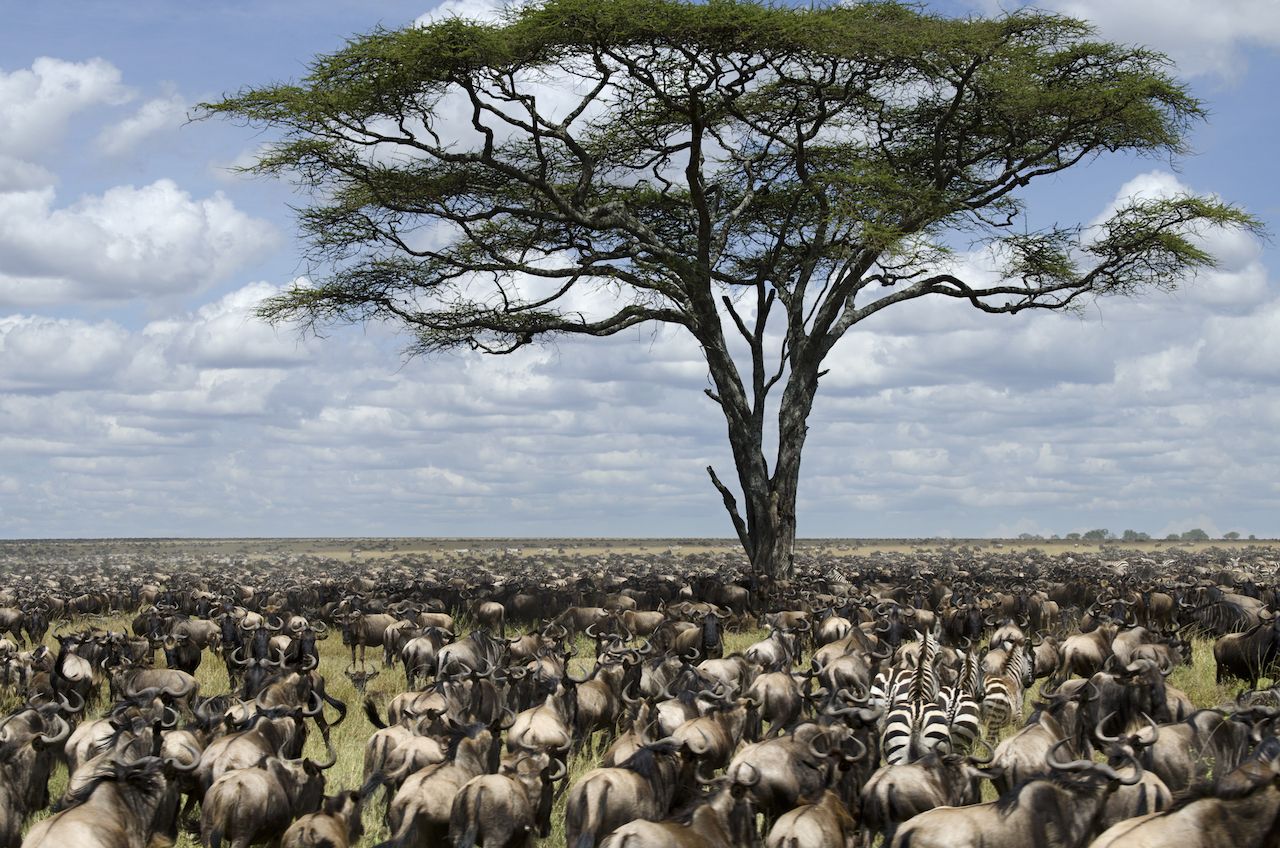
Photo: Eric Isselee/Shutterstock
Following grasses that grow with seasonal rains, enormous herds of wildebeest and zebra traverse the Serengeti Plains each August and September. More than two million animals make the trek from Tanzania into Kenya, a scene dramatic enough on its own, but made even more so by the predators that lie in wait for unexpecting, injured, or weakened creatures. In addition to lions, cheetah, and hyena, the massive herd of wildebeests and zebras is frequently sprinkled with other charismatic megafauna looking for sustenance, including elephants, giraffe, and water buffalo.
When to visit: August-September
2. Monarch butterflies: Michoacán, Mexico

Photo: reisegraf.ch/Shutterstock
Every year, the skies of Northern Mexico bloom crimson with 300 million vibrantly colored butterflies commuting South to escape cold winter temperatures. Their destinations are the mountain regions of Valle de Bravo and Anguangeo, both areas home to designated butterfly sanctuaries. Some places attract such dense populations of butterflies that their combined weight snaps the branches of the trees on which they’ve alit.
When to visit: January-February
3. Caribou: Northeastern Alaska, United States
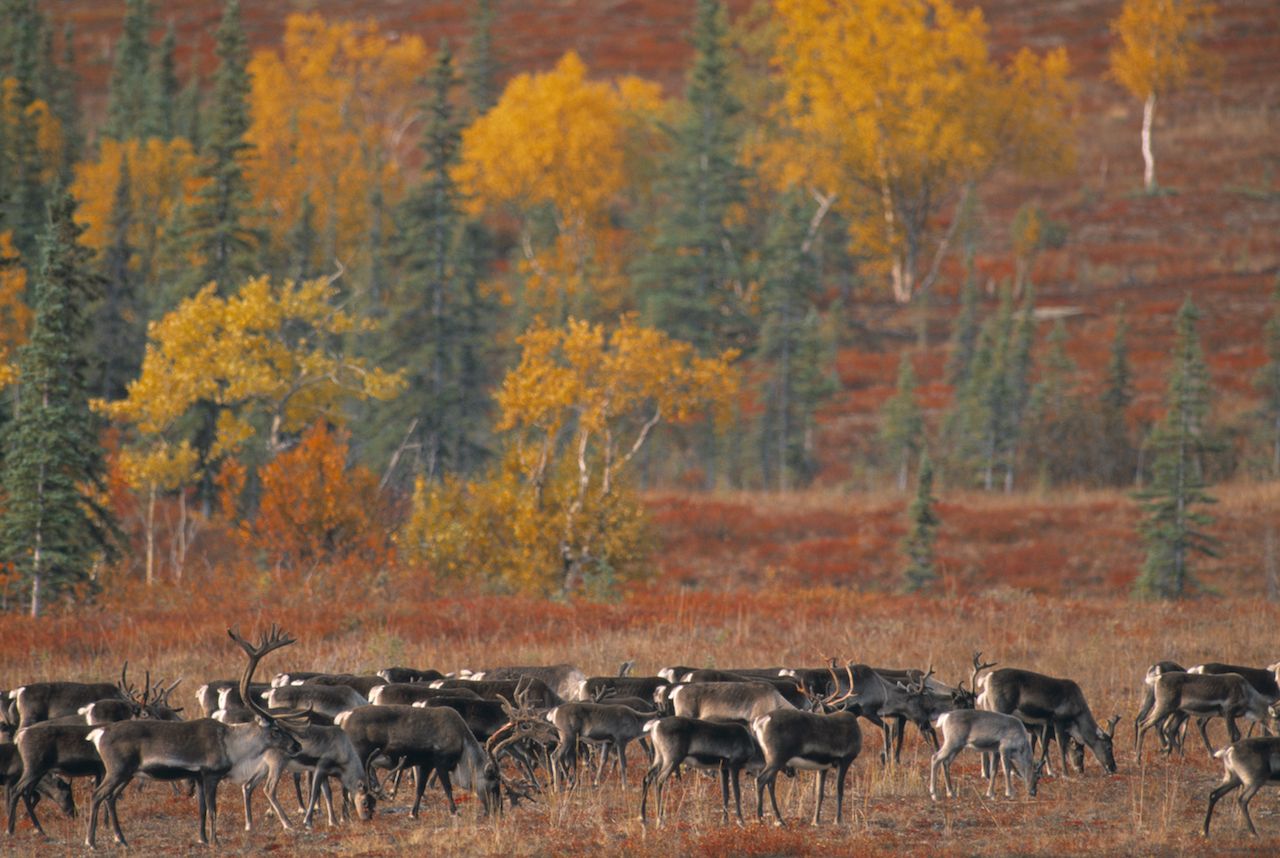
Photo: BMJ/Shutterstock
The Arctic National Wildlife Refuge, in the Northeastern corner of Alaska, is where over 100,000 caribou travel each summer to birth and raise their calves before heading south in advance of Alaska’s famously frigid Winter. Calves grow quickly in the 24-hour summer sun but herds are on constant alert for packs of wolves and giant grizzlies which lurk on the periphery. The awe-inducing landscape provides a spectacular backdrop for this epic gathering.
When to visit: June-July
4. Green sea turtles: Tamarindo, Costa Rica
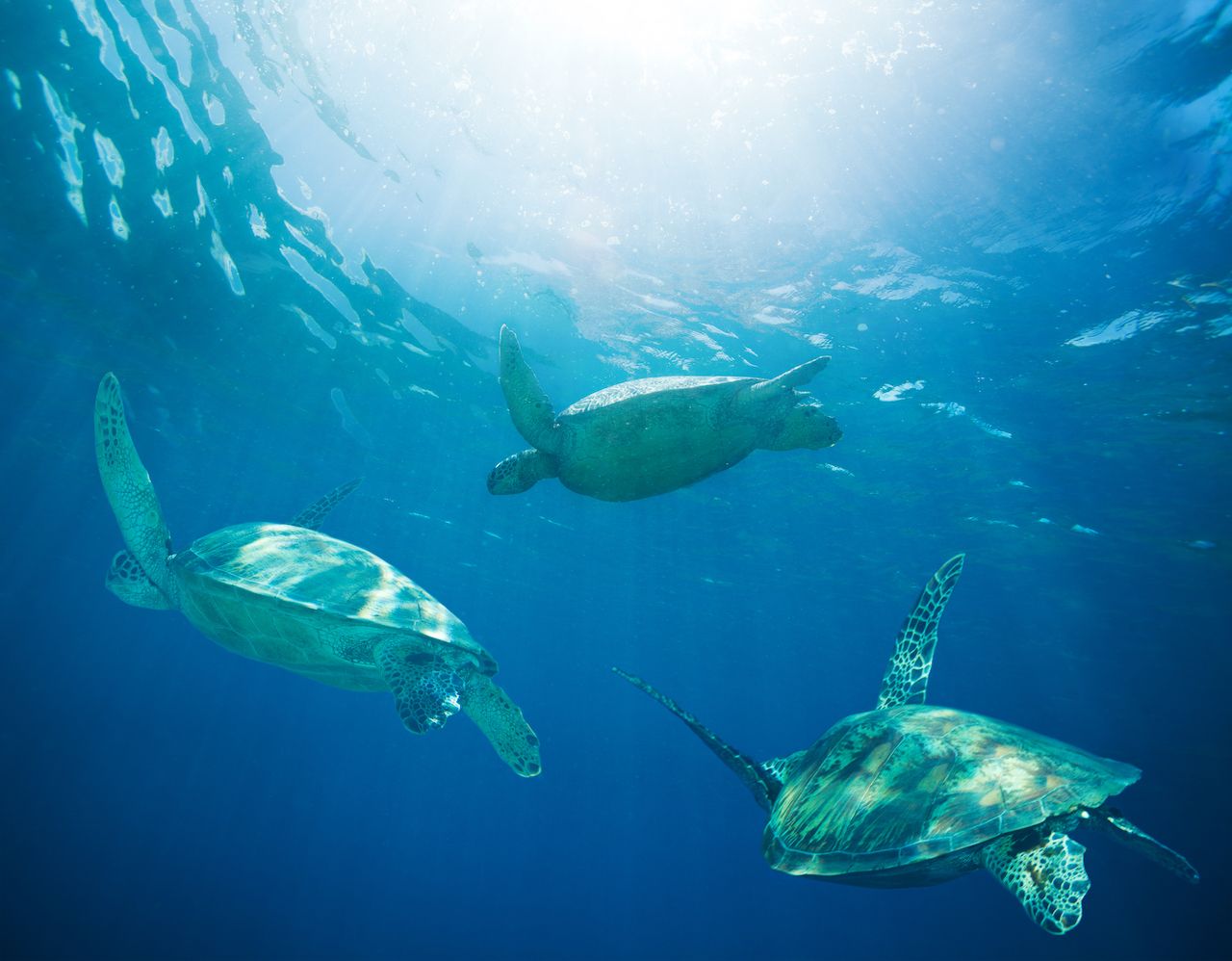
Photo: Sergey Novikov/Shutterstock
Following the pull of the moon, thousands of endangered green sea turtles return to the beaches of their births to complete this yearly cycle of rebirth. The behemoths haul themselves onto land and lay eggs before returning to the sea. 45-55 days later, the sands of the beach come alive with thousands of tiny copies of their parents, rushing to the safety of the sea to one day complete the ritual themselves.
When to visit: June-July
5. Grey whales: Baja, Mexico
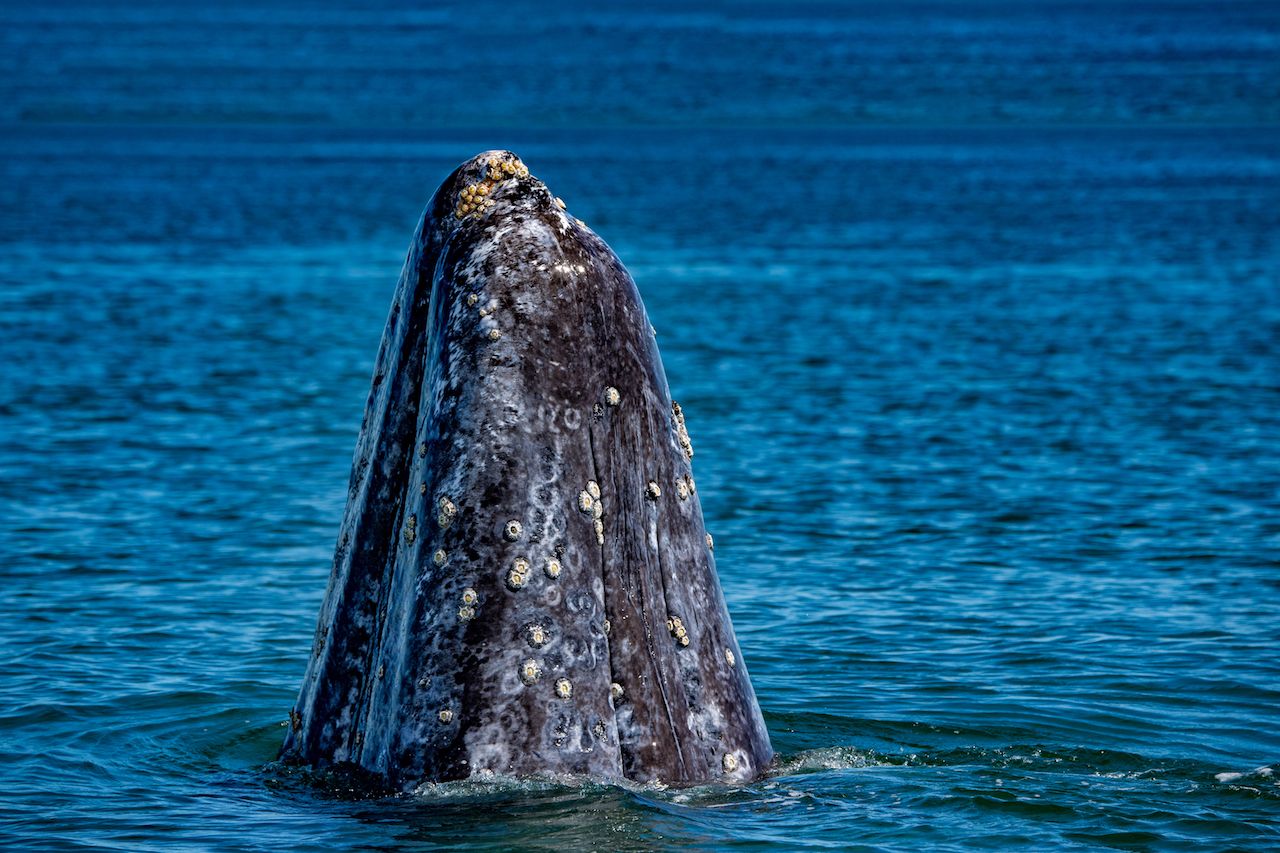
Photo: Andrea Izzotti/Shutterstock
On the southwest coast of Baja, Mexico the birthing lagoons mark the end of the spring journey of the Pacific grey whale. After gorging in the fertile waters of the Arctic, the whales head south to give birth in these warm, protected waters. These lagoons have become famous for their “friendlies,” whales that actually solicit interaction with humans. Just over 100 years ago, these same whales held a very different nickname: “devil fish”; smashing to bits the whaling boats which would converge on the lagoons for easy pickings.
When to visit: February-March
6. Red crabs: Christmas Island, Australia
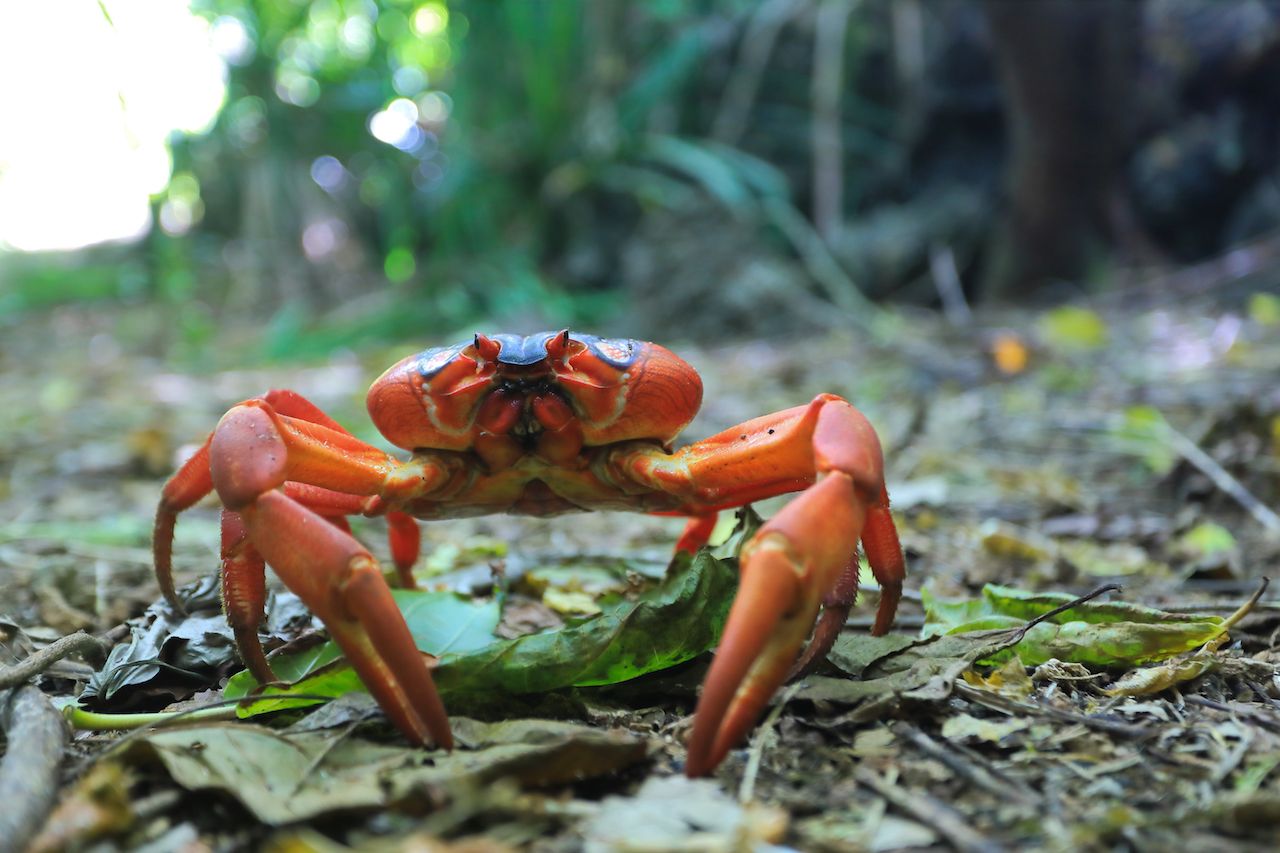
Photo: KiltedArab/Shutterstock
Nearer to Indonesia than Australia, this Australian territorial island is alive with rainforest beauty. Each spring, from deep beneath green trees, more than 50 million red land crabs emerge from burrows and move in swarms to the coast for breeding. The mission is a famously suicidal one, with many crabs not surviving the journey through bustling towns and across busy roads. Those that make it release their eggs into the sea and successfully repeat the harrowing journey, pinchers crossed.
When to visit: October-November
7. Sandhill cranes: Kearney, Nebraska
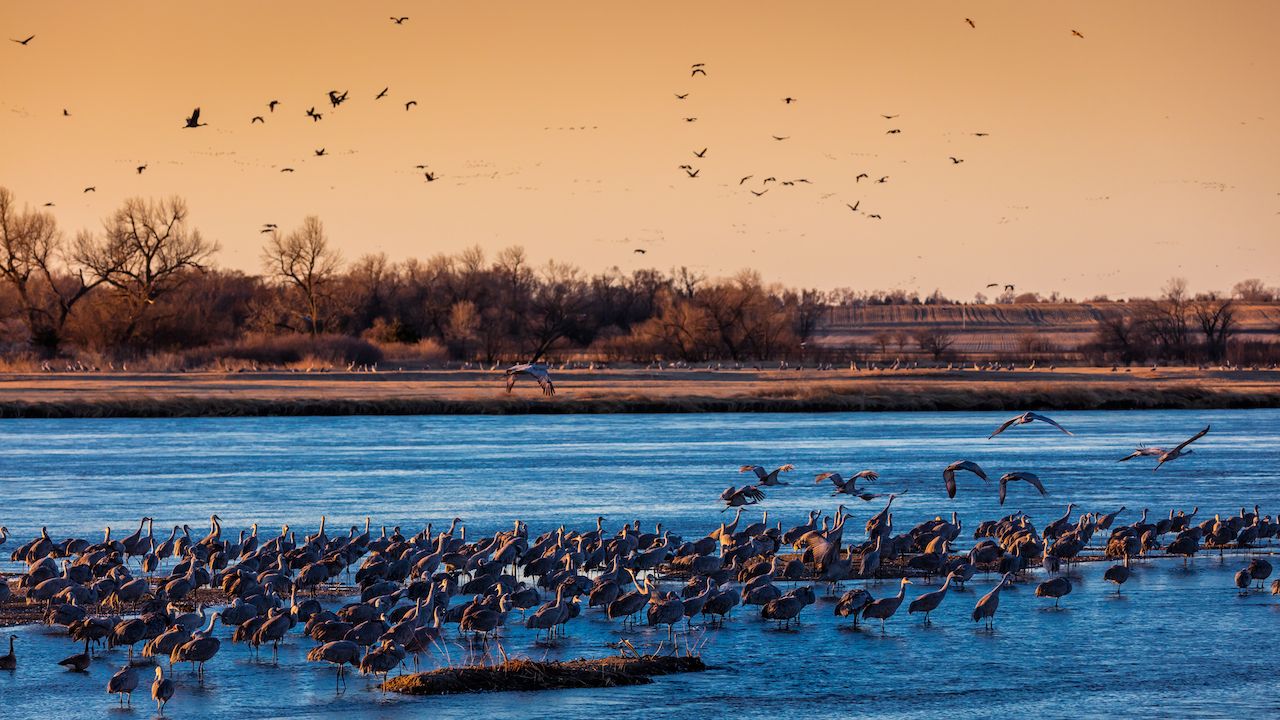
Photo: Joseph Sohm/Shutterstock
Located smack in the middle of the Central Nebraska Flyway, more than 80% of the world’s Sandhill Crane population descend on the small town of Kearney, Nebraska, each year. The protected marshes provide a safe place to feed and rest before resuming their northward migration. Over 650,000 cranes were estimated in the 2018 migration, making for a spectacular sight: at 3-4 feet tall, with a 6-7 foot wingspan, a flock of these majestic birds can literally darken the skies.
When to visit: March-April